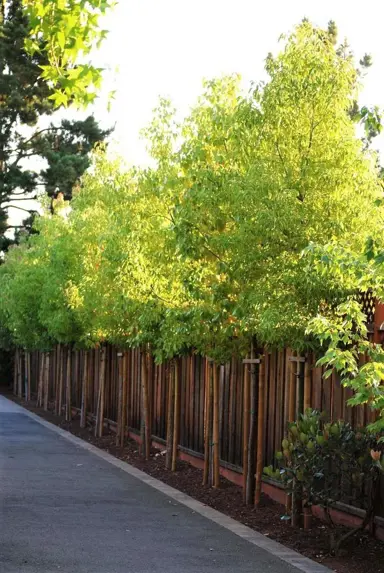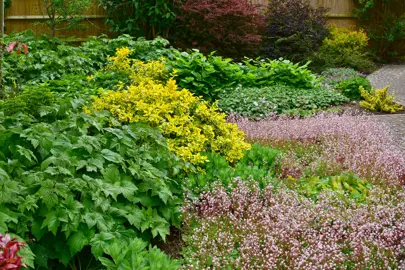
The Plant Company grows, sells, and ships Pistacia trees throughout NZ. We pride ourselves on producing high quality plants and seeing the joy from our customers when they receive them. We do hope you enjoy them and support this NZ business that is passionate about Pistacia trees.
Why? Our plants are in high demand due to our reputation for delivering high quality products at competitive prices. We may have these in production or be able to source these for you, so please feel free to contact us and our fantastic team will respond to your enquiry. Alternatively, we have a world class plant finder tool that you can use to help find alternative options.
Commonly known as the Chinese Pistache, this is a medium sized, deciduous tree grown for its impressive form and autumn colours. The finely divided...
Growing colourful and fruiting trees in your garden delivers a vast range of benefits:
We have the largest variety of Pistachio trees and the right one for your space. Our trees have been selected to thrive in NZ’s climate. We grow and stock only the highest quality plants, sourcing them locally, and from NZ’s leading nurseries. Each plant is packed and transported with extreme care, ensuring it arrives to you in the same condition it was in when it left the nursery. If you are wanting to buy Pistacia trees, shop with confidence from the best in the industry.
1. Can pistachios grow in New Zealand?
Pistachios can grow in New Zealand and there are many already growing. However, pistachio production in New Zealand is relatively limited compared to major producing regions like the Mediterranean and California. This is due to several factors, including:
Despite these challenges, there are efforts to expand pistachio production in New Zealand. Some growers and researchers are experimenting with different cultivars, irrigation techniques, and management practices to adapt pistachio cultivation to New Zealand's climate and conditions. Additionally, there is growing interest in locally grown pistachios among consumers, which could potentially support the expansion of the industry.
Overall, while pistachio production in New Zealand faces challenges, there is potential for growth and development of this industry. With continued research, innovation, and market support, New Zealand could become a producer of high-quality pistachios in the future.
2. What is the common name for Pistacia chinensis?
Pistacia chinensis is a small deciduous tree that is native to central and western China. It is also grown as an ornamental tree in temperate areas worldwide. The most common name for Pistacia chinensis is Chinese pistache. Other common names include:
The name "Chinese pistache" is the most widely used and accurately reflects the tree's origin. The other names are also used, but they may not be as specific or accurate. For example, "Chinese pistachio" is a more specific name than "pistachio," as there are other species of Pistacia that are not native to China.
3. Does Chinese Pistache have invasive roots?
Chinese pistache (Pistacia chinensis) is not generally considered to be an invasive species in most regions where it is cultivated. While its roots can spread widely, they are not typically aggressive or damaging to infrastructure or native vegetation.
4. How messy is a Chinese pistache?
Chinese pistache trees (Pistacia chinensis) can be considered moderately messy, but their messiness is manageable with proper care. The main sources of mess from these trees are their leaves, flowers, and fruits.
Overall, the messiness of Chinese pistache trees is not a major concern for most homeowners. With proper care, these trees can be enjoyed without creating too much mess.
5. Where is the best place to plant a Chinese pistache tree?
Chinese pistache trees (Pistacia chinensis) are hardy and adaptable trees that can thrive in a variety of climates and soil conditions. However, they do have some specific requirements for optimal growth and health. Here are some guidelines for choosing the best place to plant a Chinese pistache tree:
6. Is a Chinese pistache a good tree?
Chinese pistache (Pistacia chinensis) is a good tree for many reasons. Here are some of its benefits:
7. How to harvest pistachio nuts
Harvesting pistachio nuts involves several steps to ensure the nuts are properly collected and processed for consumption. Here's a step-by-step guide on how to harvest pistachio nuts:
Remember to handle the nuts with care to minimize damage and ensure they retain their quality throughout the harvesting process. Proper harvesting and processing techniques will yield high-quality pistachio nuts that are ready for consumption or further processing.
Whether you need assistance finding the plant you’re looking for or you simply want to know more about who we are and what we do, we invite you to get in touch with us today. A member of The Plant Company team will get back in touch as soon as possible.


